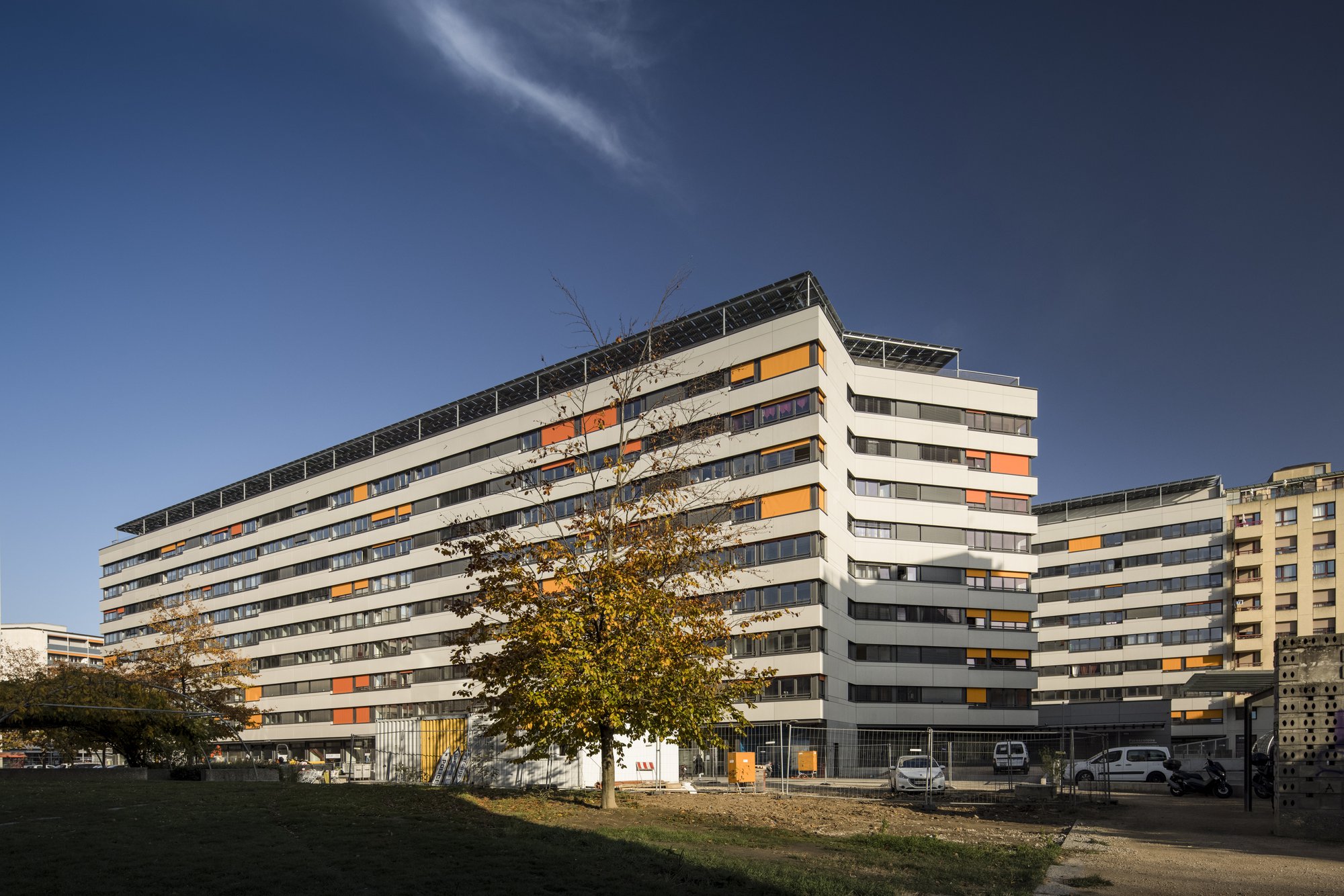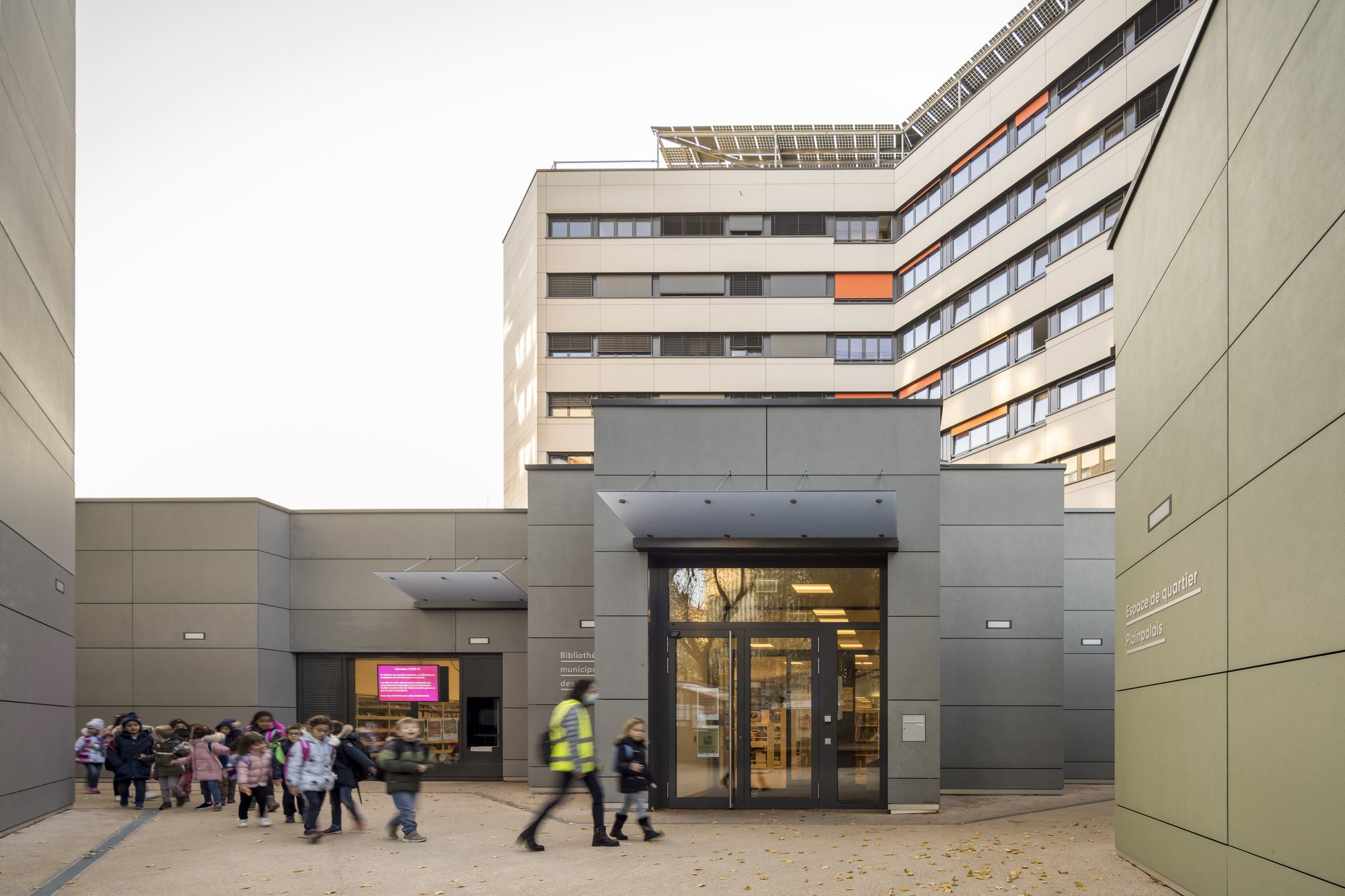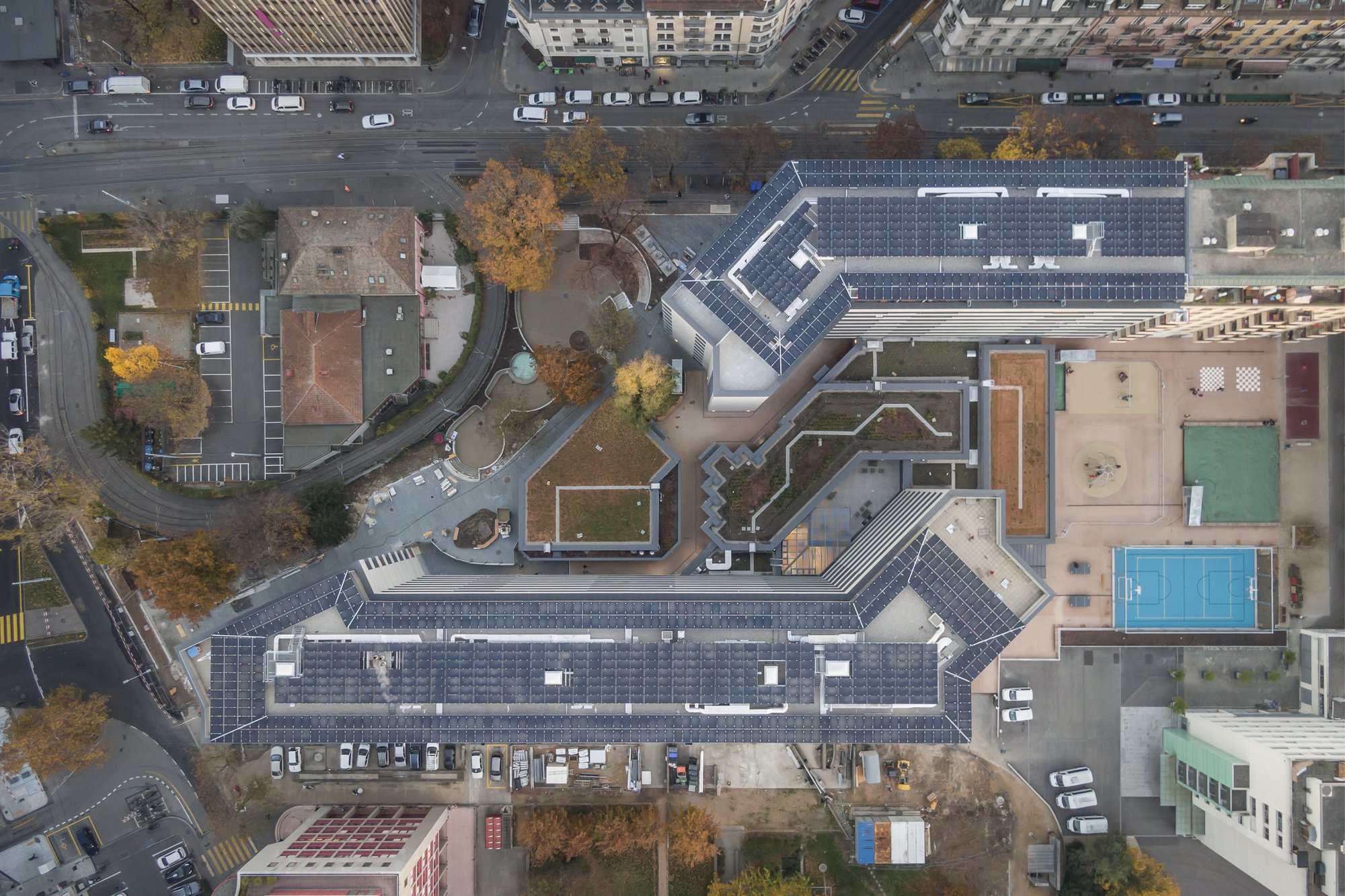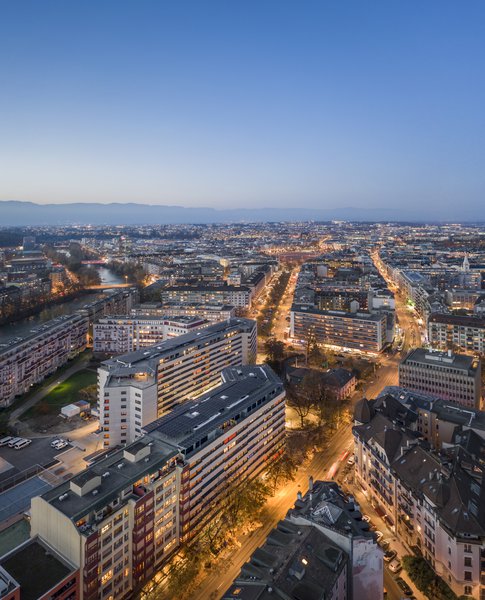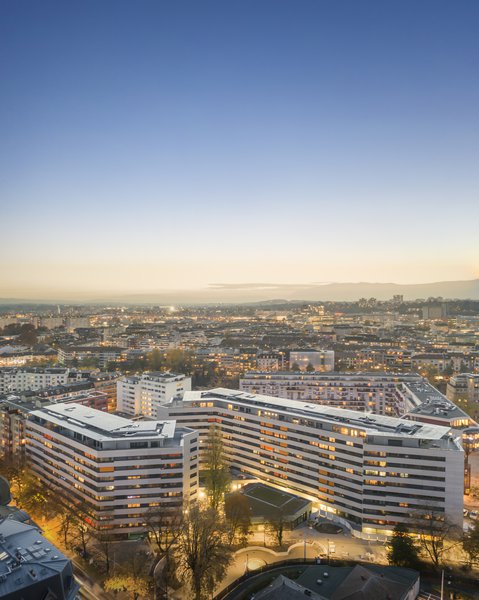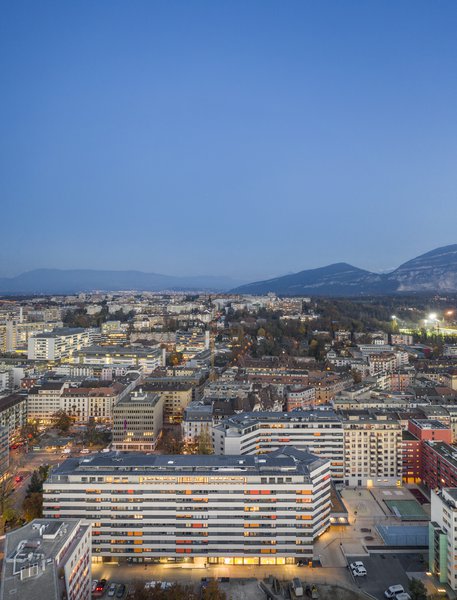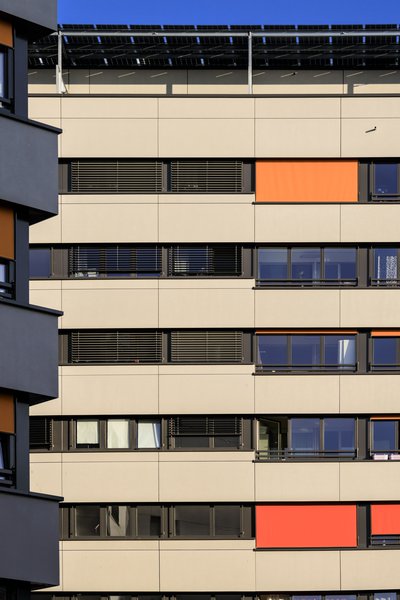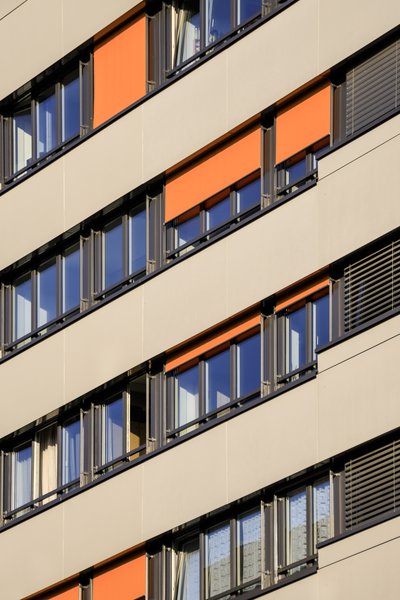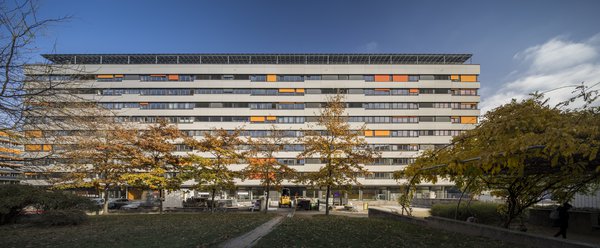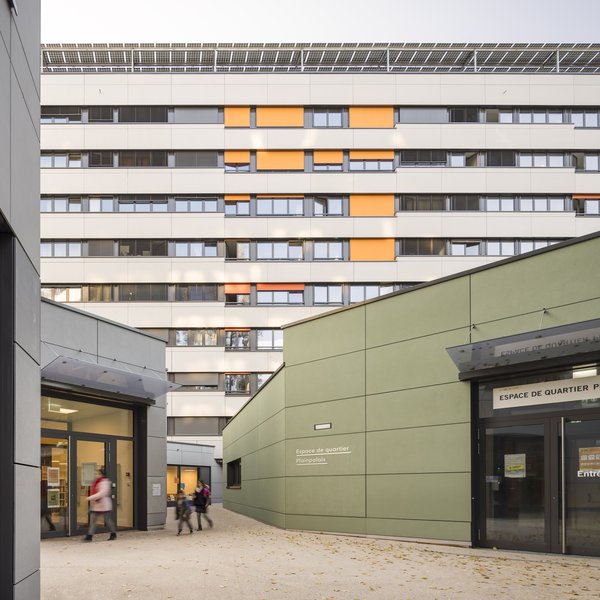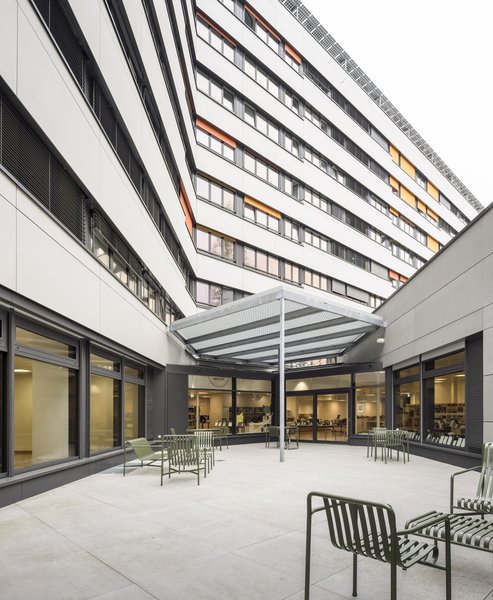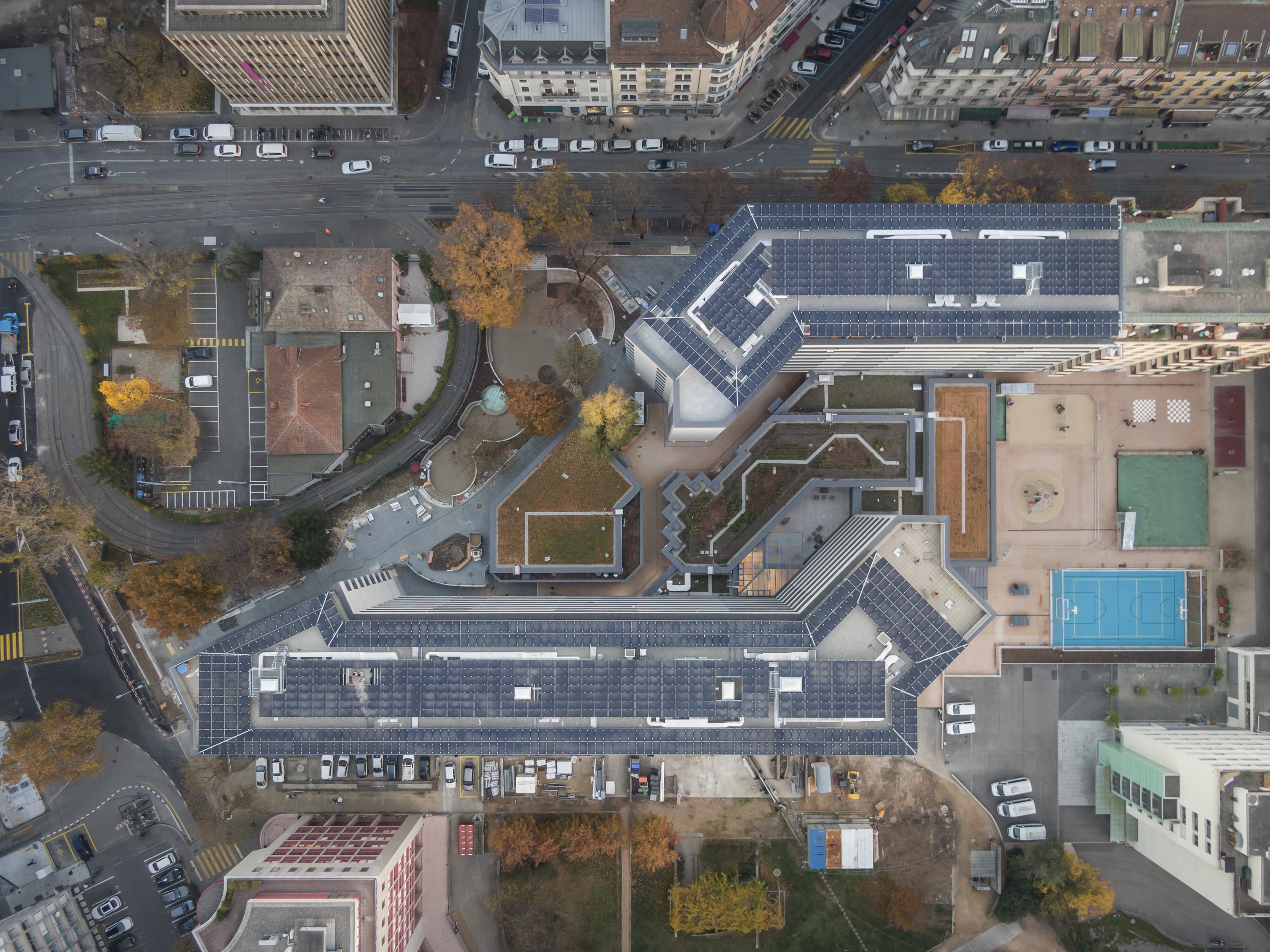
Client
Ville de Genève
Architect
Itten+Brechbühl AG
Competition
1st prize 2010
Planning
2010 - 2015
Start of construction
2016
Start of operations
2020
Floor space
41 048 m2
Construction volume
131 353 m3
Appartments
329
Back
Geneva, Switzerland
Minoteries
| Program |
Renovation of 2 bars for 7 buildings: - 8 floors of housing, i.e. 329 flats from 2 to 5 rooms - 1 attic floor housing 9 artists' studios - 1 crèche - 2 garage levels Ground floor plinth: - A public passageway - Commercial arcades - Shared service rooms (laundry, bicycle rooms) - An infirmary - A municipal library - A nursery school - Table tennis room - A seniors' club |
||||||||
| Client | Ville de Genève | ||||||||
| Competition | 2010 | ||||||||
| Planning / Construction | Planning: 2010-2015 Start/end of works: 2016-2020 | ||||||||
| Services provided by IB |
|
||||||||
| Surface area | 41'048 m2 | ||||||||
| Construction volume | 131'353 m3 | ||||||||
| |||||||||
The Minoteries renovation project is recognised as one of the most remarkable architectural renovations in French-speaking Switzerland. Built by the architectural firm Honnegger between 1971 and 1976, this building is one of the City of Geneva's major property developments, currently housing almost 800 residents in 329 flats.
The renovation has preserved and enhanced the original architecture while modernising the infrastructure to meet current environmental standards. The energy consumption of all the buildings is now entirely covered by renewable energy sources, with no greenhouse gas emissions. In addition, improvements have been made to the quality of life in the neighbourhood.
In particular, the architectural work has made it possible to extend the interior spaces of the homes by transforming the balconies into loggias, while respecting the original style of the building. The external landscaping has also been redesigned to improve safety and traffic flow. The most remarkable change is the new layout of the ground floor galleries. The removal of the roof has optimised access to the now open spaces.
As part of the renovation, the buildings have been fully insulated and fitted with photovoltaic and thermal solar panels, making them completely independent of fossil fuels. Another major challenge involved keeping the residents in place throughout the works, which required a great deal of coordination between all the players involved.
Main works:
- Insulating the building envelope,
- Renovation of the roofs, including the installation of photovoltaic elements,
- Refurbishment and optimisation of the technical installations.
- Redefinition of the urban space (galette)
